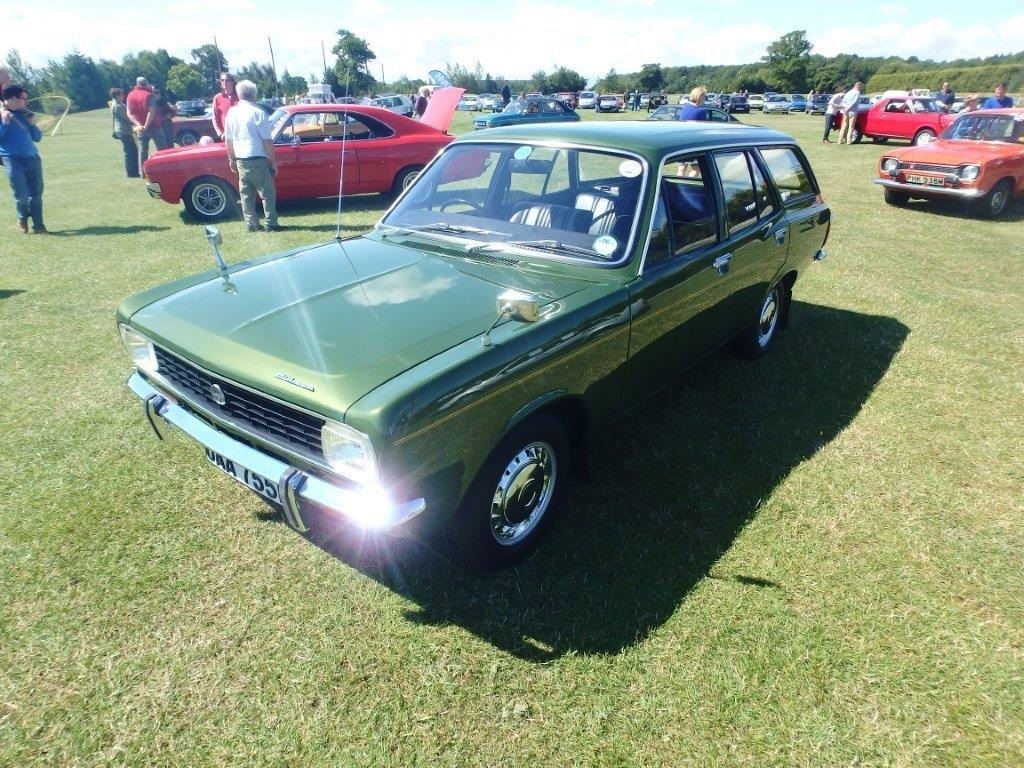-
Insurance
InsuranceAbout our productsLearn about insuringGet a quote Get current values, historical values, model history and more.
-
Valuation
ValuationHagerty valuation toolLook up a vehicle value Get current values, historical values, model history and more.
-
Events
EventsHagerty official eventsHagerty ClubhouseEvent calendar
-
Entertainment
EntertainmentMore to explore
- Portal login
1973 Hillman Hunter
GL 4dr Saloon 1.7 L
Vehicle values by condition
Fair
Condition 4
£2,300
#4 cars are daily drivers, with flaws visible to the naked eye. The chrome might have pitting or scratches, the windshield might be chipped.
Good
Condition 3
£3,700
#3 cars could possess some, but not all of the issues of a #4 car, but they will be balanced by other factors such as a fresh paint job or a new, correct interior.
Excellent
Condition 2
£4,900
#2 cars could win a local or regional show. They can be former #1 cars that have been driven or have aged. Seasoned observers will have to look closely for flaws.
Concours
Condition 1
£6,400
#1 vehicles are the best in the world. The visual image is of the best car, unmodified, in the right colours, driving onto the lawn at the finest concours.
Insurance premium for a
1973 Hillman Hunter GL 4dr Saloon 1725
valued at £3,700
£105.10
/ year*
History of the 1966 - 1977 Hillman Hunter

1966 - 1977 Hillman Hunter
Along with the Volkswagen Beetle and Transporter and the Citroen 2CV, the Hillman Hunter can lay genuine claim to being a world car. Indeed, it’s the only one of these still in production; even the Transporter was phased out in Brazil in 2014. The Hunter was most recently licensed in The Sudan in 2015, as the Paykan. It was previously built in Iran from 1966-2005.
The Paykan is a good place to start, as the name derives exactly from the original Rootes Group name for the car -– the Arrow. The car was conceived in 1962 as a competitor to the Ford Cortina, Morris Oxford/Austin Cambridge and Vauxhall Victor. It was a conventional front-engine, rear-drive monocoque from William Towns, whose square vision would be fully realized in the radical Aston Martin Lagonda of 1976. The Arrow series would be built as a saloon, estate, fastback coupe and pickup.
The first Arrow to be launched was the Hillman Hunter in 1966. It replaced the baroque Hillman Super Minx and was powered by a new 66hp OHV 1725cc engine, tilted 15 degrees to lower the bonnet, with McPherson strut front suspension and rear leaf springs. Firsts for Rootes included curved side glass and flow-through ventilation. Four-speed gearboxes were fitted, with optional overdrive. A 3-speed Borg-Warner automatic transmission was available, followed by a 4-speed in 1973. Power brakes were offered in 1968. Despite a couple of mild facelifts the car remained much the same throughout its life.
In its 13-year domestic run, Hillman variations included the 1967 Hillman Minx, with a smaller 1496cc engine and a Hillman Estate the same year. The Hillman GT of 1970 had Minx trim and a 94hp, twin carburettor 1725cc engine and Rostyle wheels. In 1972 the Hillman Hunter GLS had twin Weber carburettors, and tuning by Holbay, which was good for 107hp.
The Hillman Hunter was accompanied by numerous badge-engineered siblings and to further confuse things, the names varied for overseas markets. The familiar shape was badged at different times as Humber Sceptre, Singer Gazelle, Singer Vogue and Sunbeam Arrow, Sunbeam Minx, Sunbeam Sceptre and Sunbeam Vogue.
The Singer and Humber variations were more luxurious, while the Sunbeam had sporty pretensions. The Sunbeam Alpine and Rapier fastback coupes resembled Chrysler’s 1964-1966 Plymouth Barracuda in America. Chrysler took over the Rootes Group in 1967 and gradually reduced the number of models to just the Hillman Hunter in 1976, which became the Chrysler Hunter from 1977-1979.
In Australia, the 1967 Hunter was also badged as the Arrow, with the smaller Minx engine. The estate was called the Safari, while the up-level Singer Vogue became the Hunter Royal. The Hillman GT was sold as the Hustler, then became the Hunter Royal GT. New Zealand also created Singer versions from 1967-1973 and eventually sold 30,000 Hunter variations in 12 years. South Africa sold Hunters as Hillmans, with the addition of a pickup, called the Dodge Husky.
The Iranian connection is the longest, starting in 1966 with the Paykan, which is Iranian for Arrow, and including taxis, saloons, estates and pickups. The Hillman/Chrysler connection continued until 1985, by which time Peugeot had bought Chrysler Europe and began to supply Peugeot drivelines for the venerable design. The pickup version – named Bardo 1600i was still in production in 2015, at which time the Sudanese government bought the production rights.
The Hunter has one enduring claim to fame when Andrew Cowan, Colin Malkin and Brian Coyle won the 1968 London-Sydney Marathon. The French pair Lucien Bianchi and Jean-Claud Ogier were leading Cowan, but were involved in a head-on crash only 98 miles from the finish. Third place Paddy Hopkirk, who was ahead on the road, stopped to put out the fire and help the injured pair and Cowan took an unexpected victory.
Total production of Hillman Hunters is elusive. Hundreds of thousands were built in multiple variations in numerous countries, but there are very few survivors in the UK.
All 1973 Hillman Hunter body types
| Year | Make | Model | Submodel | Body Type | Engine size | Average value |
|---|---|---|---|---|---|---|
| 1966 | Hillman | Hunter | GL | 4dr Saloon | 1.7 L | £ 2,300 3,700 4,900 6,400 |
| 1966 | Hillman | Hunter | GT | 4dr Saloon | 1.7 L | £ 3,600 4,900 5,900 9,200 |
| 1972 | Hillman | Hunter | GLS | 4dr Saloon | 1.7 L | £ 7,400 13,800 18,400 24,200 |
Hagerty Newsletter
Get your weekly dose of car news from Hagerty UK in your inbox

ADVERTISEMENT